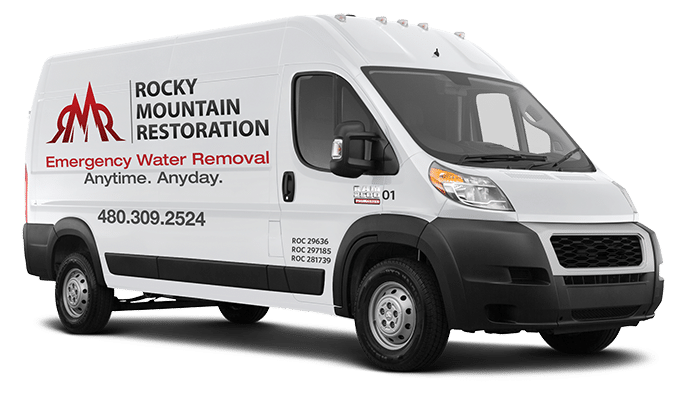Did you know that minor water damage in your basement can go unnoticed until it’s too late? Signs like a musty smell, peeling paint, or slight water stains are warning signals. These signs indicate that more serious problems might be hiding beneath the surface.
Early detection is key. It can save homeowners a lot of money and prevent major damage. But what does minor water damage look like, and how can you spot it before it gets worse? Keep reading to learn how to identify and fix basement water damage effectively.
Key Takeaways
- Basement water damage often initially presents itself through musty smells, peeling paint, and water stains.
- Detecting minor water damage early can save significant repair costs.
- Common sources of water damage include faulty sump pumps, leaky appliance hoses, and cracked walls.
- Immediate action is crucial to manage mold growth, structural repairs, and drying affected materials.
- Professional restoration services ensure efficient and thorough repairs to restore the basement to its original condition.
Assessing the Cause of Basement Water Damage
Finding the source of water damage in a basement is key to fixing it right. Spotting small water damage early can stop bigger problems later. Water damage can come from inside, like broken pipes or faulty appliances, or from outside, like bad drainage or natural disasters.
Leaky pipes and broken water lines are common causes of water damage. Appliances like fridges or washing machines can spill water if their water lines break. HVAC systems, especially cooling units and heaters, can also cause trouble if their condensation lines get clogged or leak. Look for leaks or malfunctions in these areas to spot minor water damage.
Natural disasters like hurricanes, floods, and heavy rain can cause a lot of water damage. The roof is often hit hard during hurricanes, leading to water getting into the basement. Clogged gutters can also cause rainwater to overflow, damaging walls and floors. Look for signs like water rings, discoloration, sagging ceilings, and mold to spot early signs of water damage from outside.
Water damage can also happen because of human mistakes, like leaving a faucet on or filling a tub too much. Catching these small water damage signs early can stop bigger problems. Water damage is divided into three types: clean water (like from broken supply lines), gray water (from washing machines), and black water (from sewage).
Professionals check for hazards like asbestos or lead when they inspect water damage. This careful check is important for fixing the damage right. Ignoring water damage can lower your property’s value and cost a lot to fix, showing why it’s crucial to catch small damage early.
Steps for Immediate Water Damage Mitigation
Acting fast is key when dealing with water damage. First, stop the water source to prevent more leaks. This step is crucial for spotting minor water damage early.
Once the source is stopped, remove the standing water. Use tools like wet vacs and submersible pumps for this. Then, start drying the area with air movers and dehumidifiers.
Look for hidden moisture with special tools. These hidden spots can cause more damage if not found.
Signs of minor water damage include water stains and musty smells. Also, look for peeling paint and condensation. Spotting these early helps you act quickly.
Quickly dry and clean items that can be saved. This stops mold from growing, which can happen in just 24 hours. Throw away items that can’t be saved to avoid health risks.
Use dehumidifiers to dry hard-to-reach areas. Clean and sanitize surfaces to keep the air safe. If damage is too big, you might need to repair or rebuild walls and floors.
- Professional intervention: Experts are trained to handle water damage and use the right tools.
- Inspecting home’s structure: Regular checks, especially of the foundation, can prevent big damage.
- Electrical safety: Have a licensed electrician check wiring and outlets after water damage to avoid electrical dangers.
- Personal well-being: Taking care of yourself and your family during the repair is important for health and safety.
By following these steps, you can reduce water damage and ensure a successful repair. Spotting minor damage early helps avoid bigger problems and keeps your home and health safe.
Conclusion
Early detection and quick action are key when dealing with water damage in basements. Spotting signs like discolored walls or musty smells can save a lot of money. It also prevents health risks from mold and mildew.
Small signs like peeling paint or cold spots need to be fixed fast. This stops bigger problems later on.
Plumbing issues, roof leaks, and broken appliances often cause water damage. Regular checks and care are important. If ignored, water damage can weaken structures, leading to dangerous collapses and expensive fixes.
Mold can grow in just 24-48 hours after water damage. This can cause breathing problems and other health issues, especially in damp places like basements.
Getting help from experts like Rocky Mountain Restoration is a good idea. They do thorough checks, remove water, dry, clean, and fix what’s needed. They use special tools to dry things fast, stopping more damage and fixing your place.
Keeping gutters clear and watching for leaks, like around pipes and appliances, helps a lot. Spotting and fixing small water damage early keeps your home safe and healthy.













